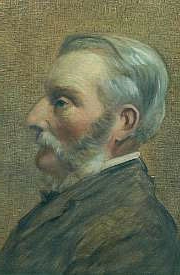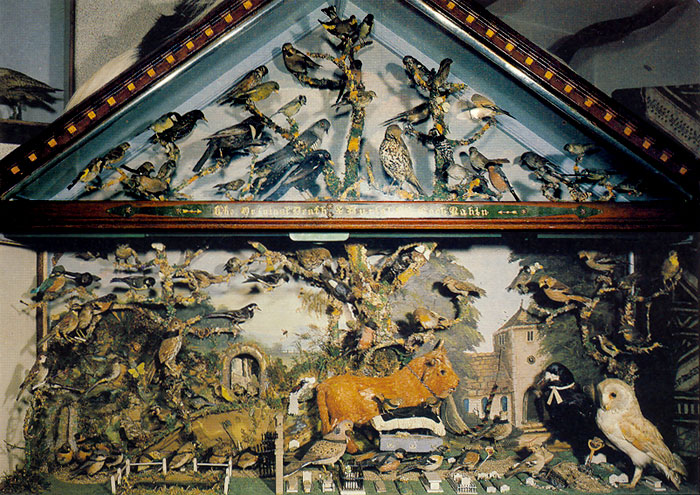Walter Potter (1835 - 1918) was a Taxidermist, not a brilliant one there were far better throughout Britain, but what was different about Walter Potter was how he posed the taxidermy that he created. Instead of posing birds or animals on rocks or branches in natural scenes, or 'tableaux' as they were known, he depicted them in human scenes; playing cards, boxing, drinking and getting married.... to name a few.

Walter Potter began Taxidermy when he was 19, and it was around this time that he began to create his first and possibly most impressive tableaux 'Who Killed Cock Robin', a case that took 7 years to complete. This case along with several others have gone on display again at the 'Museum of Everything' exhibition currently running in London till Dec. (See below). The artist Peter Blake who has co-curated the exhibition, bought some of Walter Potter's creations back in 2003 when they were all auctioned after the Jamaica Inn in Cornwall decided to sell the collection. The cases ended up around the world, but several of the most important ones have been brought together for the exhibition.

Although these days taxidermy is often frowned upon, in the Victorian period it was a perfectly acceptable decoration on a wall or in a drawing room, like an Ikea picture is today! I can see why some people might be unnerved by the exhibits, certainly the more freakish ones like the two headed lamb, but I find the likes of the 'Upper Ten' a group of high class squirrels enjoying drinks and a game of cards, to be pure genius. Walter Potter managed to create not just a comical scene, but by adding so many little nuances and idiosyncrasies you actually believe these characters exist. It's like seeing a living version of Beatrix Potters illustrations - although most were created long before her first book were published (and she wasn't related!).
In essence he gave them life, which is quite ironic considering they are stuffed! Walter Potter prided himself on the fact that none of the animals in his tableaux's were killed specifically for them, they had all either died naturally or had been killed as part of natural culling which occurred regularly at that time by farmers and the like. The red squirrels pictured above for instance were in Victorian times considered a pest and regularly shot, now fortunately they are protected, nevertheless the red squirrel population in the UK has not been depleted through ten stuffed in a Walter Potter case, you need to look at the Grey Squirrel for the real blame for that!
If you want to know more about Walter Potter, his museum and the works he created then click here
If you want to see some of these for yourself then visit the Museum of Everything before the end of Dec, details here
The original Museum in Bramber, Sussex